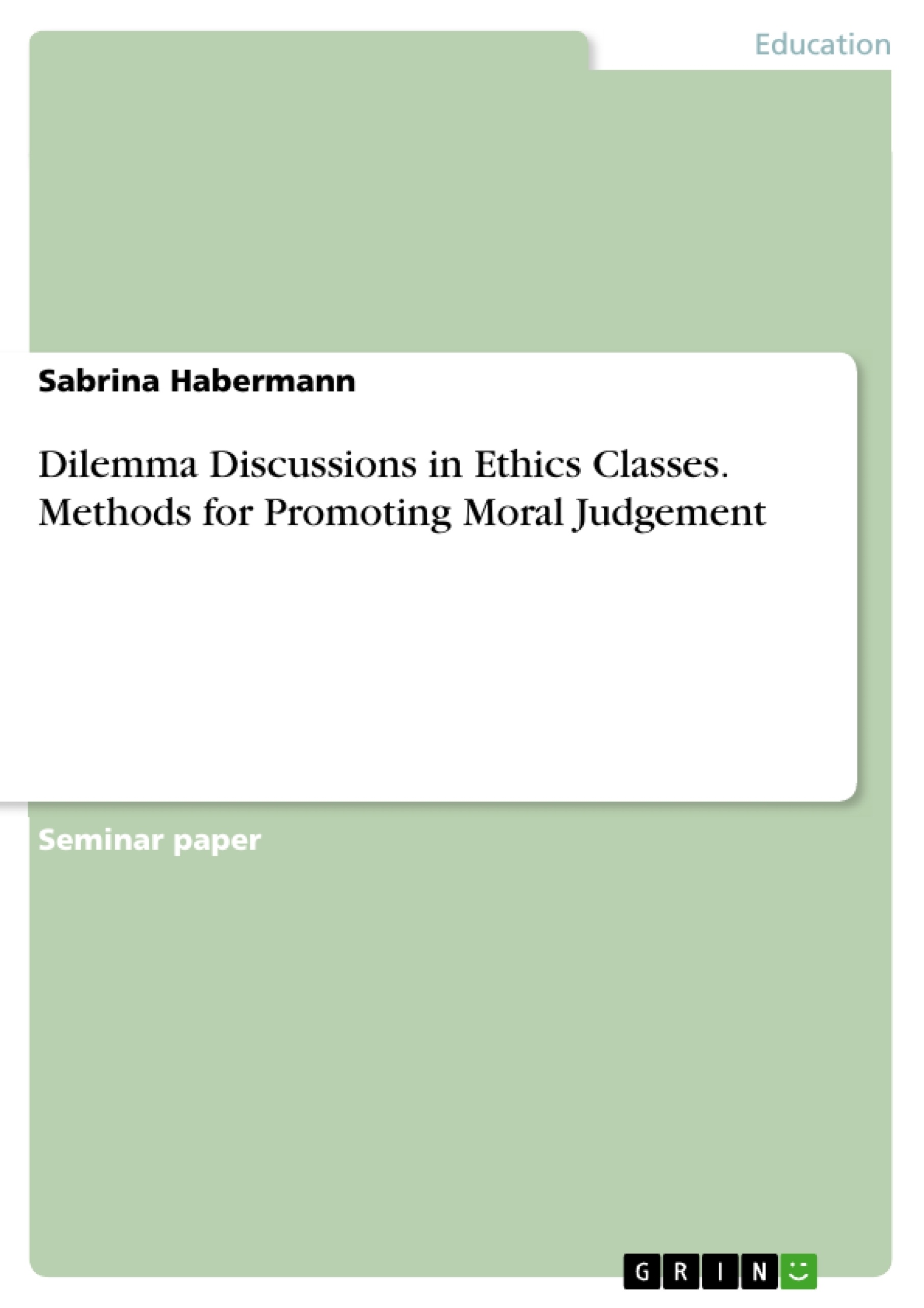Education should "promote young people in the development and strengthening of their whole person," according to Hartmut von Hentig in the introduction to the 2004 education plan. This is a difficult task in today's pluralistic society, in which young people are expected to do more than simply obey and adopt traditional values and norms. This often leads to uncertainty and fear of the future, especially when one's own ideals come into conflict with one another or have to be represented against a majority opinion.
In such situations, the question "What should I do now?" often arises. There is no universal answer to this question; however, it is the task of schools and parents to give students some orientation. Ethics classes in particular, which are often referred to as "thinking about morality," should serve as a way of providing this orientation. This can be ensured primarily through philosophical discussions, in which the aim is to assess morally difficult situations and to point out possible courses of action. It is not important to decide between "right" and "wrong", but to be able to reflect on values in a way that is appropriate to the situation.
An important teaching method to support this moral judgment is the "dilemma method", which will be discussed in more detail. For this purpose, the term "morality" will be discussed in more detail and it will be defined what is meant by the ability to make moral judgments. Before the Kohlberg stage model is discussed in detail, the stages of moral development are briefly presented in tabular form. After general remarks on Kohlberg's concept, a methodical reflection of the dilemma method follows, in which especially criteria of a good dilemma story are discussed. Subsequently, the use of the method in ethics classes is explained on the basis of a dilemma from the book "On My Sister's Life". For this purpose, the competencies that students can acquire through the use of the dilemma method are first discussed before the course of the lesson is outlined in detail.
Inhaltsverzeichnis (Table of Contents)
- Introduction.
- Subject analysis
- Definition of “morality”.
- Moral judgment..
- Kohlberg's stage model
- Stages of moral development.
- Detailed description........
- General notes on the stage model..
- Factors influencing moral judgment
- Methodical reflection
- Dilemmas as a method
- Criteria of dilemmas ....
- History of dilemmas.
- Background information
- Specific dilemma from the novel
- Acquisition of competence.
- Attitudes
- Abilities
- Knowledge.
- Methodical Implementation
- General remarks
- Lesson plan.……………………..\n
- Entry phase.
- Problem statement.
- Elaboration phase I
- Backup phase I
- Elaboration phase II
- Securing of results II / Closing….….………………………….\n
- Structure sketch
- Summary
Zielsetzung und Themenschwerpunkte (Objectives and Key Themes)
This text aims to explore the use of the "dilemma method" as a teaching tool to enhance moral judgment in students. It delves into the concept of morality, particularly within the context of Kohlberg's stage model of moral development. The text examines the role of dilemmas in promoting philosophical discussions and critical thinking around morally complex situations.
- The definition and development of "morality"
- The significance of moral judgment in navigating value conflicts
- The use of Kohlberg's stage model in understanding moral development
- The "dilemma method" as a pedagogical tool for fostering moral reflection
- The application of the dilemma method in classroom settings
Zusammenfassung der Kapitel (Chapter Summaries)
- Introduction: This chapter introduces the central theme of the text, highlighting the importance of moral education in a pluralistic society. It emphasizes the need for students to develop critical thinking skills and navigate complex ethical dilemmas. The chapter also briefly discusses the "dilemma method" as a valuable teaching tool.
- Subject analysis: This chapter delves into the concept of "morality" as a foundational element for understanding moral judgment. It examines Kohlberg's stage model of moral development, outlining the various stages and their associated characteristics. The chapter also explores the influence of social context and the role of justice in moral decision-making.
- Methodical reflection: This chapter examines the "dilemma method" as a pedagogical approach for fostering moral reflection. It outlines the criteria for effective dilemma stories and provides historical context for the method. The chapter also highlights the use of dilemmas in fostering ethical discussions and promoting critical thinking skills.
- Acquisition of competence: This chapter explores the competencies that students can acquire through the "dilemma method." It emphasizes the development of attitudes, abilities, and knowledge related to moral reasoning and critical thinking. The chapter aims to illustrate the multifaceted benefits of the dilemma method in supporting student development.
- Methodical Implementation: This chapter outlines the practical implementation of the "dilemma method" in classroom settings. It provides a detailed lesson plan, including specific phases and strategies for engaging students in ethical discussions. The chapter also addresses the structure and organization of dilemma-based lessons.
Schlüsselwörter (Keywords)
The primary focus of this text revolves around the concepts of "morality," "moral judgment," and "dilemma method." It examines the theoretical framework of Kohlberg's stage model of moral development and its practical application in pedagogical settings. The text emphasizes the role of dilemmas in promoting critical thinking, ethical reasoning, and the development of moral competencies in students.
- Quote paper
- Sabrina Habermann (Author), 2012, Dilemma Discussions in Ethics Classes. Methods for Promoting Moral Judgement, Munich, GRIN Verlag, https://www.grin.com/document/1181944




